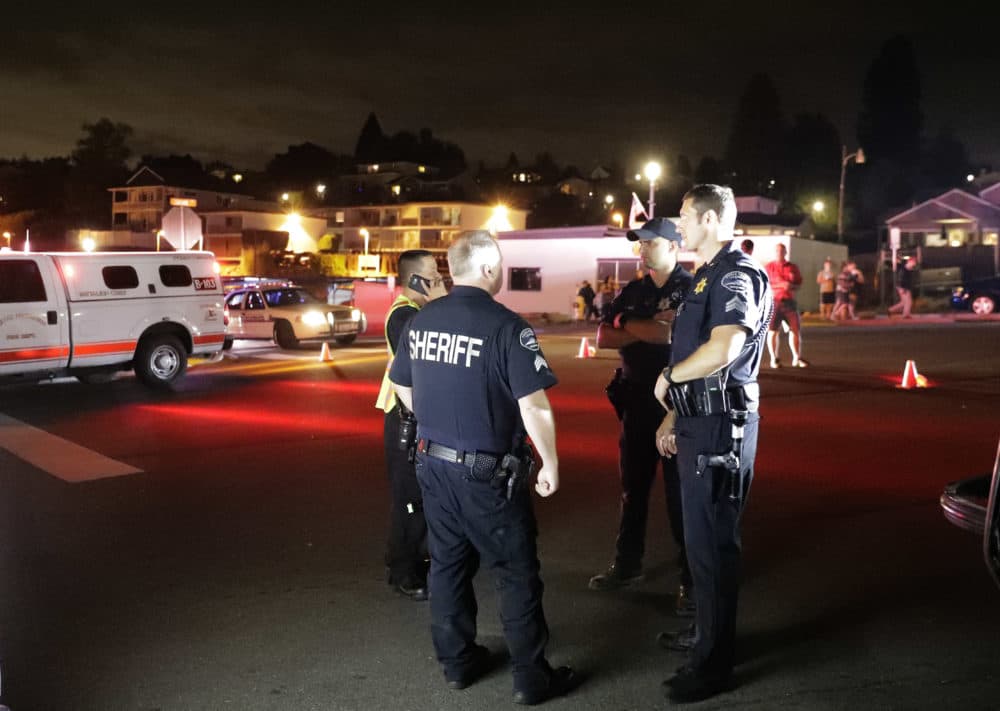Advertisement
How Could An 'Unauthorized Takeoff' Like The One In Seattle Happen?
Resume
There are a number of unanswered questions about how an airline employee was able to steal a plane at Seattle-Tacoma International Airport. The employee died when he crashed the plane.
Here & Now's Robin Young asks airline security expert Mary Schiavo (@MarySchiavo) how this could have happened. She says modern aviation is completely different from when she learned to fly in the 1970s because everything is computerized. There are even videos on YouTube explaining how to fly a plane.
"If he did any study on a computer, on a laptop, you can learn computers in the plane," Schiavo says. "In fact, nowadays a good portion of your training, and it's approved by the FAA, is in a simulator sitting in an office, in a lab, in a classroom on a computer."
Interview Highlights
On what is required to learn how to fly a plane
"There's one [lesson] out there that actually has a picture of this plane on the cover of the software. It actually says Alaska Airlines. It's $49. Now, you put that realization in today's modern aviation, meaning that if you're going to flight school you have a background check, you have to tell the FAA if you've taken any medications, including anything for depression or psychological drugs. But if you're working on the airfield, and you're one of the 900,000 U.S. airport employees in this country, all you have is a criminal background check. You have to prove your identity, meaning fingerprints have to match your driver's license ... [you] have to be who you say you are. That's your background check. So you have people that can learn to fly. The only exception would be — and he didn't need this — landing. I still think landing takes some skill and finesse. The moment he took off, he couldn't have known how to land."
On how he was able to gain access to the plane
"That's where it comes back to the airline security program. Each airline has their own security program, and one of the elements that must be in that security program is to prevent unauthorized access to aircraft. Now, there are a lot of ways to do it. In the olden days, you locked them up. But in today's modern environment, you can have access to the aircraft through the computers for towing purposes, but for full authority to actually turn on and operate the airline and to put it into certain modes, what you would have to do in this modern day and age is have a computer lock out. In other words, it would take a pilot's code into the flight computer to allow the plane to be put in any kind of a operational mode other than for towing. So I think airlines will have to look at that because Congress will probably rev up last year's bill. Remember the House passed a bill last year as part of the Homeland Security Committee to look at the security, or lack of security, and the access of 900,000 airport employees. By the way in that report, they found 73 employees at airports in the United States had connections to terror groups. This fellow obviously didn't, but this will open the speculation to saying, 'Well, what if it wasn't this fellow?' "
"I still think landing takes some skill and finesse. The moment he took off, he couldn't have known how to land."
Mary Schiavo
On why air traffic control didn't see him take the plane
"Because of the lay out at Sea-Tac and where Alaska Airlines' cargo hangar is, it's a very short, straight shot. And the [air traffic control] tower there, I mean it's a new one, but it does have blocked areas on the airport where you can't see everything moving. And what we don't know yet — and this will be on that flight data recorder — is whether he turned on the taxi lights, whether he turned on the lights on the plane. We don't know if he did that. If he didn't turn on any lights, they might not have been able to see it when it first started moving. And if a guy with the tug is moving a plane around, the assumption is that it's OK, you're just tugging the plane around. And so between that point when he actually got in and turned it on to get onto the runway is a very straight shot."
On how air traffic controllers handled the situation
"It was a horror. And, you know, one of the good things about the controllers that they did is they got him talking. At one point, he asked the controllers if they can help him get the plane pressurized because he was light headed. But if he was not at an altitude over 10,000 feet, and well over 10,000 feet, hypoxia doesn't usually set it right at 10,000 feet. For him to be complaining about lightheadedness to me was a clue maybe he was ill, maybe he had a problem. That to me was a clue, and the air traffic controllers, by keeping him talking, learned a lot, going to help in the investigation tremendously, and by being kind and having a gentle touch with him, you know perhaps, they helped avoid disaster."
This segment aired on August 13, 2018.